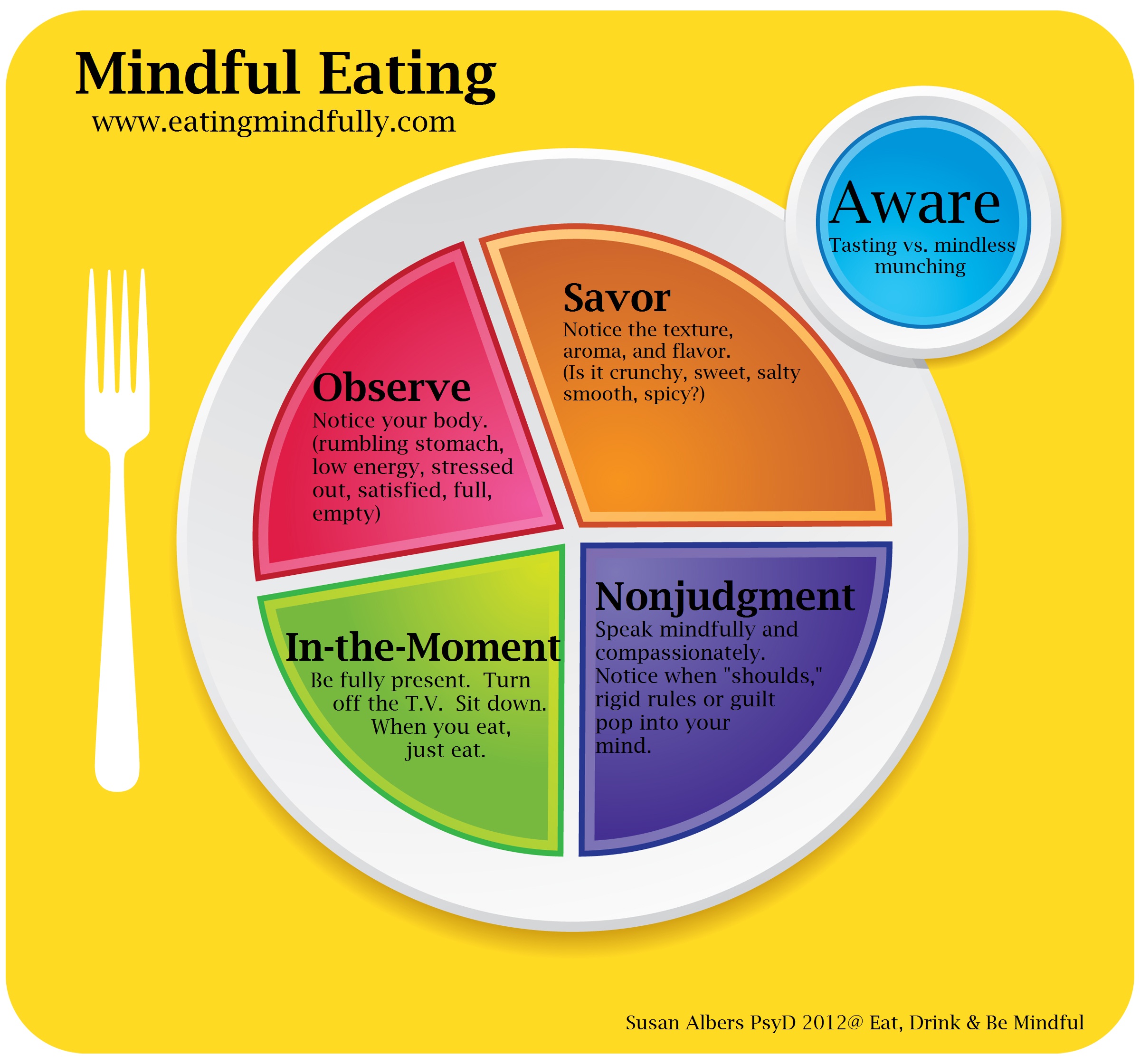Introduction
Importance of Mindful Eating
In today’s fast-paced world, it’s easy to overlook the importance of mindful eating. We often find ourselves eating on the go, in front of screens, or while juggling multiple tasks. However, this mindless approach to meals can lead to overeating, poor nutrition, and a disconnection from the joy and satisfaction that food can provide.
Mindful eating, on the other hand, is a practice that invites us to slow down, pay attention to our food, and savor each bite. It’s about being present at the moment and appreciating the nourishment our meals provide. This approach to eating can transform our relationship with food, leading to improved health, increased satisfaction, and a deeper connection with our bodies and the world around us.
Benefits of Mindful Meals
The benefits of mindful meals extend far beyond the dining table. By practicing mindful eating, we can cultivate a healthier relationship with food, one that is based on awareness and appreciation rather than guilt or restriction. This can lead to healthier eating habits, weight management, and improved digestion.
But the benefits of mindful meals don’t stop there. The practice of mindful eating can also reduce stress, increase enjoyment of food, and foster a greater sense of connection with others. It can even serve as a form of meditation, helping us to cultivate presence and mindfulness in all areas of our lives.
In the following sections, we will delve deeper into the concept of mindful eating, explore its key elements, and provide practical tips for incorporating mindful meals into your daily life. Whether you’re new to mindful eating or looking to deepen your practice, this guide is designed to nourish your body and soul.
Understanding Mindful Eating
Definition and Principles
Mindful eating is a practice that involves paying full attention to the experience of eating and drinking, both inside and outside the body. It’s about noticing the colors, smells, flavors, and textures of your food; acknowledging your responses to food (likes, dislikes, or neutral); and being aware of physical hunger and satiety cues to guide your decisions to begin and end eating.
The principles of mindful eating revolve around awareness, non-judgment, and presence. It’s about being fully present in the moment, observing your experiences without judgment, and making conscious food choices that nourish your body and mind.
Mind-Body Connection in Eating
The mind-body connection in eating is a crucial aspect of mindful eating. When we eat mindfully, we tune into our body’s signals of hunger and fullness, and we pay attention to how different foods affect our body and mood. This can help us make healthier food choices and avoid overeating or emotional eating.
Moreover, by focusing on the sensory experience of eating—the taste, smell, and texture of our food—we can derive more pleasure from our meals and feel more satisfied with smaller portions.
Mindful Eating vs. Mindless Eating
Mindful eating is the opposite of mindless eating, a habit many of us fall into in our busy lives. Mindless eating involves eating while distracted—such as while watching TV, working, or driving—and often leads to overeating and less enjoyment of food.
In contrast, mindful eating encourages us to fully focus on our food, eating slowly and savoring each bite. This not only enhances our enjoyment of food but also allows us to better recognize when we’re full, helping to prevent overeating.
The Key Elements of Mindful Meals
Setting the Stage for Mindful Eating
1. Creating a Calm and Peaceful Environment
The environment in which we eat can significantly impact our ability to eat mindfully. A calm and peaceful environment free from distractions allows us to focus fully on the meal in front of us. Consider eating at a set dining area, away from your work desk or TV. Use this time as an opportunity to disconnect from the digital world and connect with your food.
2. Eliminating Distractions
Turn off the TV, put away your phone, and clear away any clutter. Distractions can pull us away from the experience of eating and lead to mindless consumption. By eliminating these distractions, we can create a space that supports mindful eating.
3. Engaging your Senses
Mindful eating involves engaging all your senses. Take a moment to appreciate the look and smell of your food before you begin eating. As you eat, pay attention to the taste and texture of each bite. Notice the sounds your food makes as you chew. This sensory engagement can enhance your enjoyment of the meal and help you eat more mindfully.
Developing a Mindful Mindset
1. Cultivating Awareness of Hunger and Fullness Cues
One of the key aspects of mindful eating is learning to listen to your body’s hunger and fullness cues. Before you start eating, take a moment to assess your hunger level. As you eat, pay attention to how your hunger changes and stop eating when you feel comfortably full.
2. Practicing Non-Judgment and Self-Compassion
Mindful eating is not about dieting or restriction. It’s about observing your eating habits without judgment and treating yourself with compassion. If you find yourself slipping into old habits, gently guide your attention back to the present moment without self-criticism.
3. Embracing Gratitude for Nourishment
Before you begin eating, take a moment to express gratitude for the food in front of you. Consider the effort and resources that went into producing your meal. This practice of gratitude can enhance your appreciation of the meal and foster a deeper connection with your food.
Engaging with Food Mindfully
1. Paying Attention to Food Choices and Ingredients
Mindful eating also involves making conscious food choices. Consider the nutritional value of your food and how it will nourish your body. Pay attention to the ingredients in your food and opt for whole, unprocessed foods whenever possible.
2. Savoring Each Bite: Texture, Flavors, and Aromas
Take the time to savor each bite of your food. Notice the flavors, textures, and aromas. Chew slowly and thoroughly. This not only aids digestion but also allows you to derive more pleasure from your food.
3. Eating Slowly and Mindfully
Eating slowly is a key aspect of mindful eating. It takes about 20 minutes for your brain to register fullness, so eating slowly can help prevent overeating. Plus, it gives you more time to enjoy your food.

Mindful Meals and Connection with Others
Creating Mindful Eating Rituals with Family and Friends
Sharing meals with family and friends can be a wonderful way to connect and create lasting memories. By incorporating mindful eating into these shared meals, you can enhance these connections and create meaningful rituals. Encourage everyone at the table to engage fully with the meal, taking the time to savor each bite and appreciate the shared experience.
Cultivating Connection through Shared Meal Preparation
The act of preparing a meal can also be a mindful practice. By preparing meals together with family or friends, you can cultivate connection and mindfulness. Engage fully in the process, taking the time to appreciate the colors and smells of the ingredients and the satisfaction of creating a meal from scratch.
Mindful Eating in Social Gatherings
Social gatherings often revolve around food, but they can also be a source of distraction, leading to mindless eating. However, it’s possible to practice mindful eating even in these settings. Try to stay present and focused on your meal, savoring each bite. Engage in conversation, but try to avoid eating while talking. If you find yourself getting distracted, gently bring your attention back to your food.
Mindful Meals and Emotional Well-being
Recognizing Emotional Triggers and Emotional Eating
Emotional eating, or the tendency to eat in response to emotions rather than physical hunger, is a common challenge. Mindful eating can help us recognize and address emotional eating by helping us tune into our physical hunger and fullness cues and distinguish them from emotional triggers. When we eat mindfully, we can learn to respond to our emotions in healthier ways, rather than using food as a coping mechanism.
Using Mindful Eating to Address Emotional Needs
Mindful eating is not just about the physical act of eating. It’s also about addressing our emotional needs and building a healthier relationship with food. By paying attention to how we feel before, during, and after we eat, we can start to notice patterns and identify emotions that may be driving our eating habits. This awareness can help us address our emotional needs directly, rather than through food.
Building a Healthy Relationship with Food
Mindful eating is a powerful tool for building a healthy relationship with food. It encourages us to appreciate food as a source of nourishment and pleasure, rather than something to be feared or controlled. By eating mindfully, we can learn to enjoy our food without guilt or anxiety and to nourish our bodies in a way that feels good to us.
Practical Tips for Incorporating Mindful Meals
Mindful Meal Planning and Grocery Shopping
Mindful eating starts with mindful meal planning and grocery shopping. When planning your meals, consider the nutritional value of different foods and how they will nourish your body. When shopping, take the time to read food labels and choose whole, unprocessed foods whenever possible. Consider the origins of your food and opt for sustainably produced options when you can.
Mindful Eating Strategies for Busy Schedules
Even with a busy schedule, it’s possible to practice mindful eating. Here are a few strategies:
- Set aside time for meals: Schedule regular meal times just as you would any other important activity. This can help ensure that you have enough time to eat mindfully, even on busy days.
- Eat without distractions: Try to eat without distractions, such as your phone or TV. Even if you only have a few minutes, you can still take the time to focus fully on your meal.
- Take mindful eating breaks: If you can’t set aside time for a full meal, try taking short mindful eating breaks throughout the day. Even a few minutes of mindful eating can help you reconnect with your body and your food.
Mindful Snacking and Eating on the Go
Mindful eating can also apply to snacking and eating on the go. When choosing snacks, opt for nutritious options that will nourish your body. When eating on the go, try to find a quiet place where you can eat without distractions. Even if you’re in a rush, try to take a few moments to savor your food and appreciate the nourishment it provides.
Conclusion
Recap of the Benefits of Mindful Meals
Mindful meals offer a wealth of benefits for both our physical and emotional well-being. By eating mindfully, we can cultivate a healthier relationship with food, one that is based on awareness, appreciation, and nourishment rather than guilt or restriction. This can lead to healthier eating habits, improved digestion, and weight management.
Moreover, mindful eating can reduce stress, increase our enjoyment of food, and foster a greater sense of connection with others. It can serve as a form of meditation, helping us cultivate presence and mindfulness in all areas of our lives.
Encouragement to Start Cultivating Mindful Eating Habits
Cultivating mindful eating habits is a journey, not a destination. It’s not about perfection, but about making small, sustainable changes that can enhance your relationship with food and your overall well-being. Remember to be patient with yourself and to approach this practice with curiosity and compassion.
Whether you’re new to mindful eating or looking to deepen your practice, I hope this guide has provided you with valuable insights and practical tips. Remember, every meal is an opportunity to practice mindful eating and to nourish not just your body, but also your soul. So, why not start with your next meal?
Embrace the journey of mindful eating, and discover the joy and satisfaction that mindful meals can bring. Happy mindful eating!












